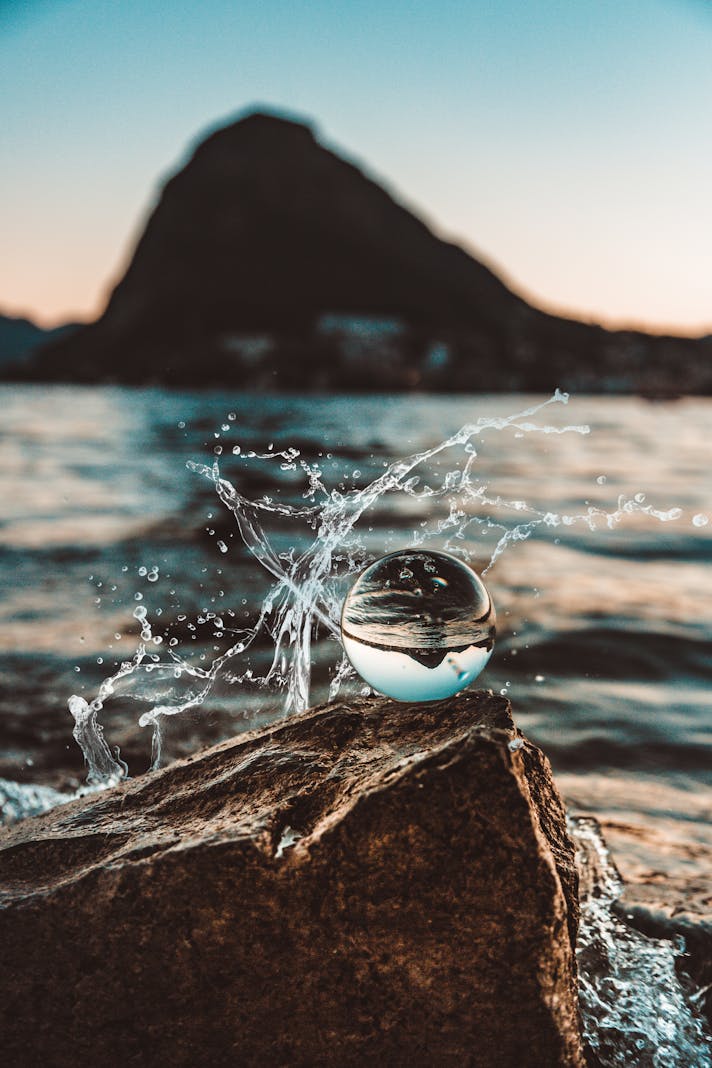Channel Islands National Park

As people ascend the metal staircase bridging the boat and the top of Anacapa Island, the smell of guano hangs heavy in the air. Seagulls fly, a cacophony of ragged screeches. On the web page for Channel Islands National Park, the NPS advises travelers that deem these circumstances ‘adverse’ to not visit between April and mid-August, the mating and nesting season for Western seagulls.
Adverse conditions? Not at all! This is why humans visit – to see the gull babies, to be a part of their cycle of life, to take in the blur of wings against views of the ocean. The boat ride to and from Anacapa is always a treat, but the opportunity to hike around gull nests filled with tiny chirping creatures is one of the best ways to observe nature in California.
Channel Islands National Park encompasses Anacapa and a few other islands that lie just off the coast of Santa Barbara and Ventura counties. There is little infrastructure here – visitors can’t even bring bicycles, and must pack everything in and out, for the most part including even water. Aside from a visitor’s center on Santa Barbara Island and two “Visitor Contact Stations” on Santa Cruz and Anacapa, there is little human presence. Camping is primitive, and travelers come to visit nature on nature’s own terms.
Getting to one or another of the Channel Islands is part of the adventure. Channel Island Aviation flies helicoptors to and from Santa Cruz; Island Packers is the only other licensed concessionaire. Visitors make reservations for one or more days, taking on the responsibility of bringing what they need if camping, and must make sure that they meet their transport for the return trip.
Once on an island, one hikes for transportation. There are only two miles of trails on Anacapa, which rises out of the ocean to a high mesa; from the boat landing, one climbs the stairs to reach the top. The island is small, but the views aren’t; plus, during the spring the parents and babies entertain visitors with their antics. Visiting Anacapa in the spring is a must-do for birders.
The other, larger islands, have many more trails, and it’s possible to spend days or even weeks entirely cut off from the mainland, connected instead to the flora and fauna that live on these tiny areas of land. Snorkeling, kayaking, and surfing are popular activities on Santa Cruz; all of the islands offer primitive campgrounds and more trails.
Because of the isolation, several mammals have evolved distinct species, such as the Island Fox and deer mice, which exist only here. This of course makes them, and all of the other species that make these windswept islands their home, vulnerable to introduced predators and other threats. For this reason, visitors are not allowed to bring potted plants, cut flowers, or even untreated wood used as a walking stick. Visitors clean their shoes thoroughly before stepping onto island soil, and boats must follow regulations to avoid bringing invasive aquatic species.
Disclaimer: I am not affiliated with the National Park Service, Channel Islands Aviation, or Island Packers. I have paid for my visits with my own funds.
Channel Islands National Park: https://www.nps.gov/chis/index.htm
Island Packers: https://islandpackers.com/home2/
Channel Islands Aviation: https://flycia.com/
Adverse conditions? Not at all! This is why humans visit – to see the gull babies, to be a part of their cycle of life, to take in the blur of wings against views of the ocean. The boat ride to and from Anacapa is always a treat, but the opportunity to hike around gull nests filled with tiny chirping creatures is one of the best ways to observe nature in California.
Channel Islands National Park encompasses Anacapa and a few other islands that lie just off the coast of Santa Barbara and Ventura counties. There is little infrastructure here – visitors can’t even bring bicycles, and must pack everything in and out, for the most part including even water. Aside from a visitor’s center on Santa Barbara Island and two “Visitor Contact Stations” on Santa Cruz and Anacapa, there is little human presence. Camping is primitive, and travelers come to visit nature on nature’s own terms.
Getting to one or another of the Channel Islands is part of the adventure. Channel Island Aviation flies helicoptors to and from Santa Cruz; Island Packers is the only other licensed concessionaire. Visitors make reservations for one or more days, taking on the responsibility of bringing what they need if camping, and must make sure that they meet their transport for the return trip.
Once on an island, one hikes for transportation. There are only two miles of trails on Anacapa, which rises out of the ocean to a high mesa; from the boat landing, one climbs the stairs to reach the top. The island is small, but the views aren’t; plus, during the spring the parents and babies entertain visitors with their antics. Visiting Anacapa in the spring is a must-do for birders.
The other, larger islands, have many more trails, and it’s possible to spend days or even weeks entirely cut off from the mainland, connected instead to the flora and fauna that live on these tiny areas of land. Snorkeling, kayaking, and surfing are popular activities on Santa Cruz; all of the islands offer primitive campgrounds and more trails.
Because of the isolation, several mammals have evolved distinct species, such as the Island Fox and deer mice, which exist only here. This of course makes them, and all of the other species that make these windswept islands their home, vulnerable to introduced predators and other threats. For this reason, visitors are not allowed to bring potted plants, cut flowers, or even untreated wood used as a walking stick. Visitors clean their shoes thoroughly before stepping onto island soil, and boats must follow regulations to avoid bringing invasive aquatic species.
Disclaimer: I am not affiliated with the National Park Service, Channel Islands Aviation, or Island Packers. I have paid for my visits with my own funds.
Channel Islands National Park: https://www.nps.gov/chis/index.htm
Island Packers: https://islandpackers.com/home2/
Channel Islands Aviation: https://flycia.com/
You Should Also Read:
California Sea Otters
The Transverse Range of Southern California
Preserving California Steelhead Trout

Related Articles
Editor's Picks Articles
Top Ten Articles
Previous Features
Site Map
Content copyright © 2023 by Korie Beth Brown, Ph.D. . All rights reserved.
This content was written by Korie Beth Brown, Ph.D. . If you wish to use this content in any manner, you need written permission. Contact Korie Beth Brown, Ph.D. for details.







